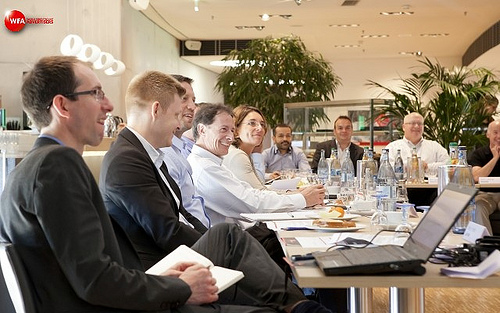Best practice for e-commerce
01/03/2012
Back to the overview
WFA members have provided guidance on the best way to ensure that e-commerce operations maximise profitability and effectiveness.
Based on a survey of 10 multi-nationals, the results provide an insight into how some of the world's biggest companies are managing the whole customer experience in this space.
Those who responded have global digital budgets ranging from less than €5m a year to more than €125m a year. Half of respondents had global responsibility, with the rest managing regional operations.
Eighty per cent have an e-commerce operation or plan to do so and among the 50% who are already selling online, 75% used an agency to provide services such as strategy and website design.
E-commerce is primarily managed in market (67%) with just a third running a global operation. All fulfilment is managed internally but half of our respondents also work closely with external resources full time.
Among those who responded to the July 2011 call for information, no-one had yet launched a social commerce initiative but nearly two thirds had plans to experiment with this new channel.
Respondents had four key pieces of advice to WFA members thinking of exploring e-commerce. They recommended companies created a separate self-funded entity to manage the process and not to underestimate the complexity of logistics.
Brands should conduct a deep analysis of business requirements and look right across their company for synergies. Finally they should be wary of over promising to consumers and or clients.
The barriers to successful e-commerce identified by WFA members included existing relationships with retailers, for example, the ability to find a reliable e-tail partner with the same expectations as well as the failure to construct a successful organisational or financial model.
CHECK For more information on the results of the survey please contact Steve Lightfoot at [email protected] or visit the WFA's Global Knowledge Base.
Sign up to monthly WFA news
Based on a survey of 10 multi-nationals, the results provide an insight into how some of the world's biggest companies are managing the whole customer experience in this space.
Those who responded have global digital budgets ranging from less than €5m a year to more than €125m a year. Half of respondents had global responsibility, with the rest managing regional operations.
Eighty per cent have an e-commerce operation or plan to do so and among the 50% who are already selling online, 75% used an agency to provide services such as strategy and website design.
E-commerce is primarily managed in market (67%) with just a third running a global operation. All fulfilment is managed internally but half of our respondents also work closely with external resources full time.
Among those who responded to the July 2011 call for information, no-one had yet launched a social commerce initiative but nearly two thirds had plans to experiment with this new channel.
Respondents had four key pieces of advice to WFA members thinking of exploring e-commerce. They recommended companies created a separate self-funded entity to manage the process and not to underestimate the complexity of logistics.
Brands should conduct a deep analysis of business requirements and look right across their company for synergies. Finally they should be wary of over promising to consumers and or clients.
The barriers to successful e-commerce identified by WFA members included existing relationships with retailers, for example, the ability to find a reliable e-tail partner with the same expectations as well as the failure to construct a successful organisational or financial model.
CHECK For more information on the results of the survey please contact Steve Lightfoot at [email protected] or visit the WFA's Global Knowledge Base.
Sign up to monthly WFA news













































































